고정 헤더 영역
상세 컨텐츠
본문
Association Rules
- What are associatin rule?
"what goes with what"에 대한 규칙
예) "X를 산 고객들은 Y도 샀다", "어떤 증상은 어떤 진단을 받는다"
- Definition
◼ item: transaction의 항목/물품
◼ item set은 하나 이상의 항목의 집합
◼ transaction: 항목의 집합
◼ transaction dataset: 트랜잭션의 집합
◼ association rule: 항목 집합 X가 발생할 때 항목 집합 Y가 특정 확률로 발생한다는 패턴
◼ Support(X): 다음을 포함하는 transaction의 일부
◼ Confidence(X->Y): 항목 집합 X를 포함하고 항목 집합 Y를 포함하는 transaction의 일부 (P(Y | X))
◼ Lift(X->Y) : X와 Y가 함께 일어날 확률과 Y 혼자 일어날 확률의 비율 (confidence(X->Y)/support(Y))
◼ Lift(X->Y)은 Y 단독, X 공동 판매 비율이 증가하는 것을 말한다.
◼ Lift가 1이면 X와 Y의 매출은 세트된 품목 내에서 상관관계가 없다.
◼ Lift가 >1이면 항목 집합 내에 양의 상관관계가 있습니다. 즉, X와 Y가 함께 구입될 가능성이 높다.
◼ Lift가 1 미만이면 항목 집합 내에 음의 상관 관계가 있습니다. 즉, X와 Y를 함께 구입할 가능성이 낮다.
◼ Lift가 <=1인 경우 선행 및 결과와 관련된 규칙을 도출할 수 없다.
◼ Lift가 > 1인 경우 규칙은 향후 데이터 세트의 결과를 예측하는 데 잠재적으로 유용하다.
아래와 같은 transaction dataset이 있을 때,
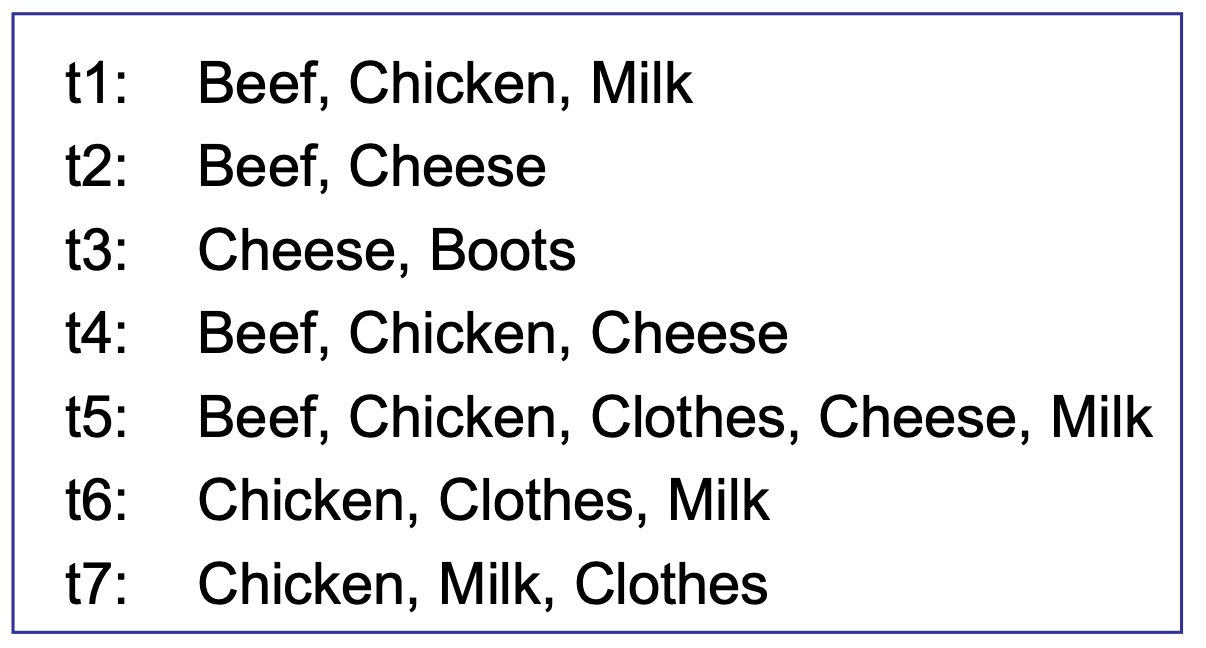
◼ itemset {Chicken, Clothes, Milk}의 support는 [sup = 3/7]이고,
◼ {Clothes} → {Milk, Chicken}의 confidence는 [conf = 3/3], {Beef, Cheese} → {Chicken} 의 confidence는 [conf = 2/3]이다.
- Association rule mining task
transaction set T가 주어지면, association rule mining의 목표는 다음과 같은 모든 규칙을 찾는 것이다.
◼ support ≥ min-support threshold
◼ confidence ≥ min-confidence threshold
Frequent Itemset을 생성하기 위해서는 Brute force 방식을 사용할 수 있다. 가능한 모든 연결 규칙 나열하고, 각 규칙에 대한 지원 및 신뢰도 계산하 후 최소 지원 및 최소 신뢰 임계값에 실패하는 규칙을 제거하는 것이다. 이는 너무 많은 계산 시간을 요구한다. 따라서 우리는 Apriori algorithm과 FP(Freqent Pattern) growth algorithm을 주로 사용한다.
1. Apriori Algorithm
사용자 지정 지원 및 신뢰도를 충족하는 규칙을 생
◼ 1단계: 빈번하게 나타나는 항목 집합(충분한 support이 있는 항목)을 찾는다.
◼ 2단계: 충분한 confidence을 가지고 있는 항목 집합에서 규칙을 생성한다.
For k items...
◼ 최소 지원 기준(임계값)을 설정
◼ 지원 조건을 충족하는 단일 항목 집합 목록을 생성
◼ 단일 항목 집합 목록을 사용하여 지원 기준을 충족하는 두 항목 집합 목록을 생성
◼ 두 항목 집합의 목록을 사용하여 지원 기준을 충족하는 세 항목 집합의 목록을 생성
◼ k-항목 집합까지 반복
k가 증가하면 support가 감소하므로 생성할 후보 항목 집합의 수를 줄일 수 있다.
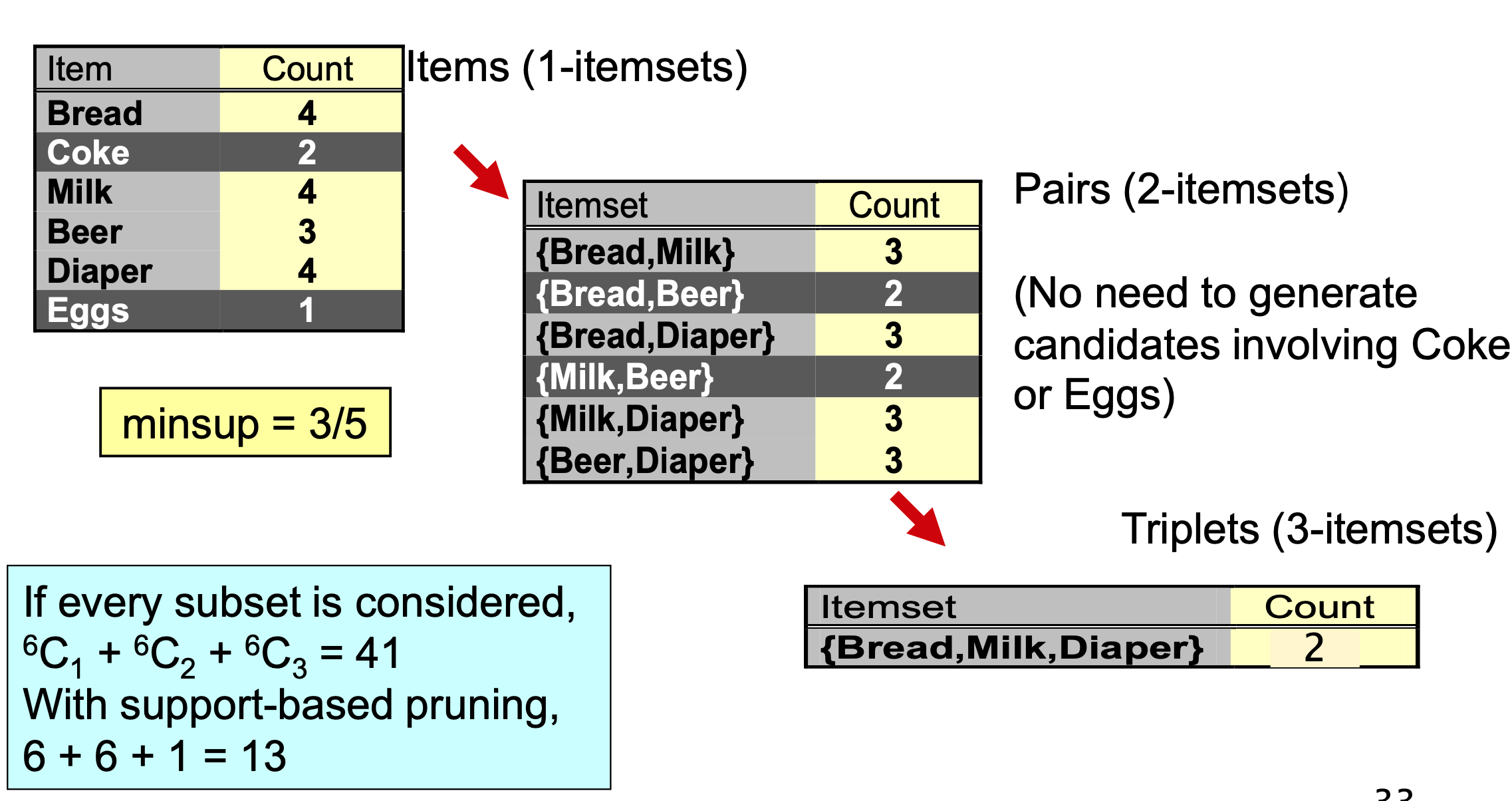
- Walkthrough example
아래와 같은 transaction dataset에서 association rule을 찾아보겠다. (support threshold=50%, confidence threshold=80%)
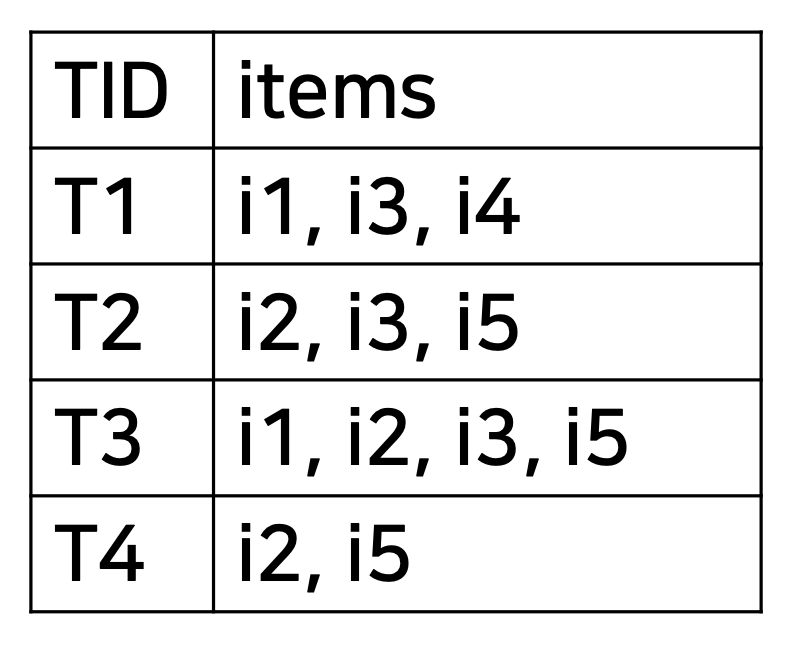
one-item candidates

2-item candidates
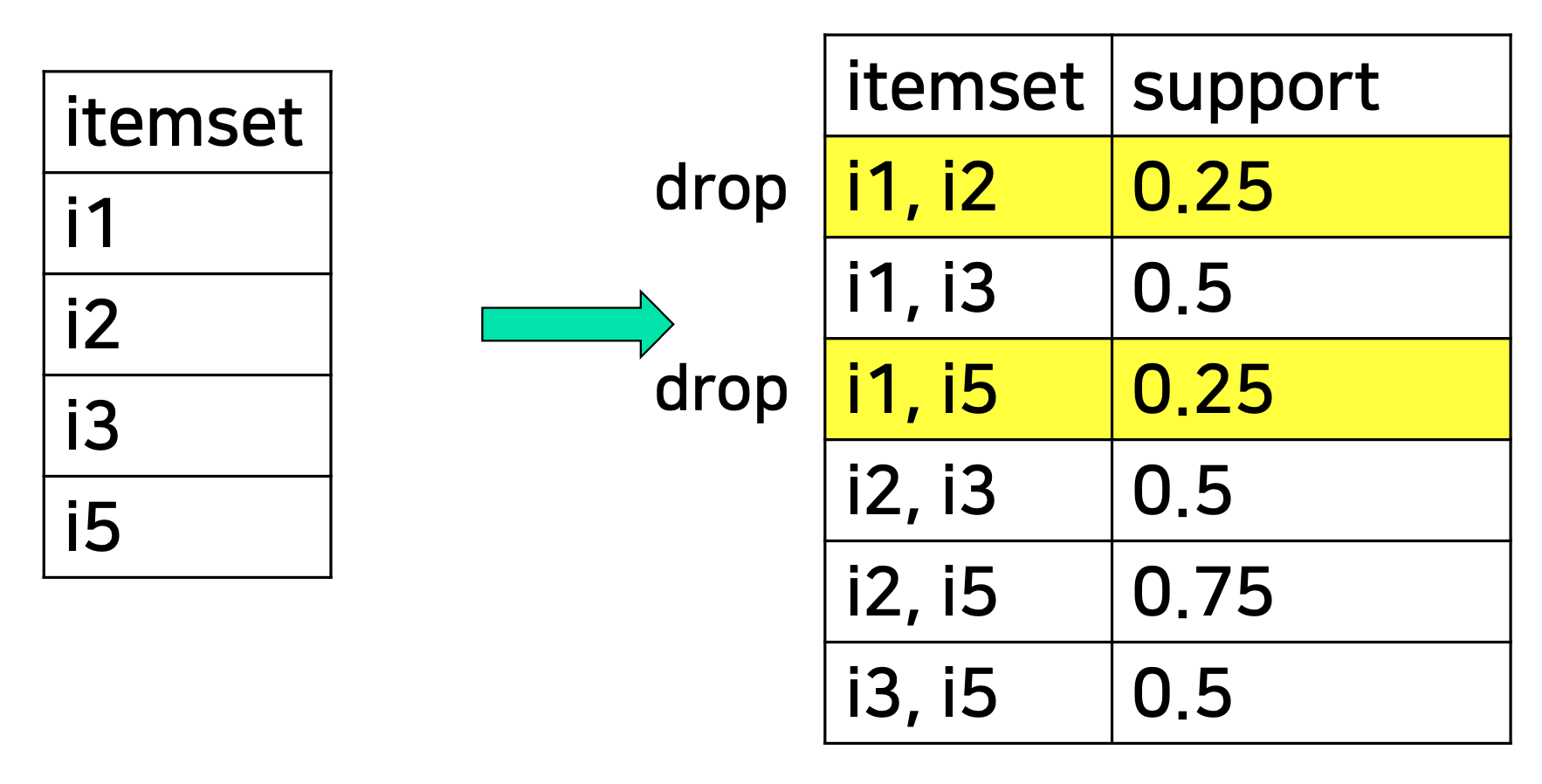
3-item candidates
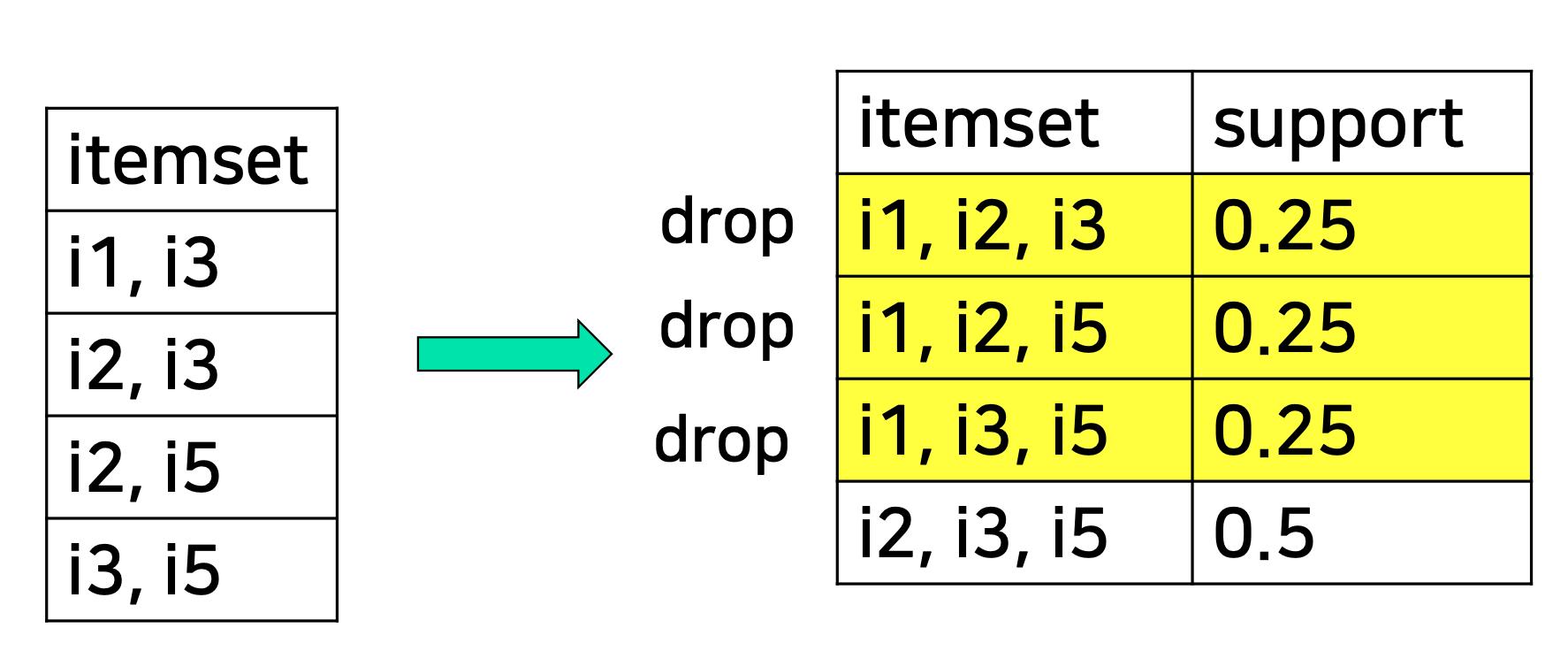
confidence test를 적용하여 최종적으로 association rules set을 찾는다.


- Python code
import numpy as np
import matplotlib.pyplot as plt import pandas as pd
from apyori import apriori
# Import the data
movie_data = pd.read_csv(‘C:\Python\MarketBasket\Movie Example\movie_dataset.csv’,header = None)
num_records = len(movie_data)
print(num_records)
# Data preprocessing
# The Apriori requires the dataset to be in the form of a list of lists.
# Currently, we have data in the form of a Pandas dataframe.
records = []
for i in range(0, num_records):
records.append([str(movie_data.values[I,j]) for j in range(0, 20)])
association_rules = apriori(records,min_support=0.0053,min_confidence=0.20, min_lift=3, min_length=2)
# Convert the rules found by the apriori class into a list to make it easier to view.
association_results = list(association_rules)
# Find the total number of rules mined by the apriori class.
print(len(association_results))
# Print the first item in the association_rules list to see the first rule.
print(association_results[0])
2. FP Growth Algorithm
Stage1: FP tree 구축
◼ 1단계: 데이터베이스 정리 및 정렬
◼ 2단계: FP 트리 및 헤더 테이블 구성
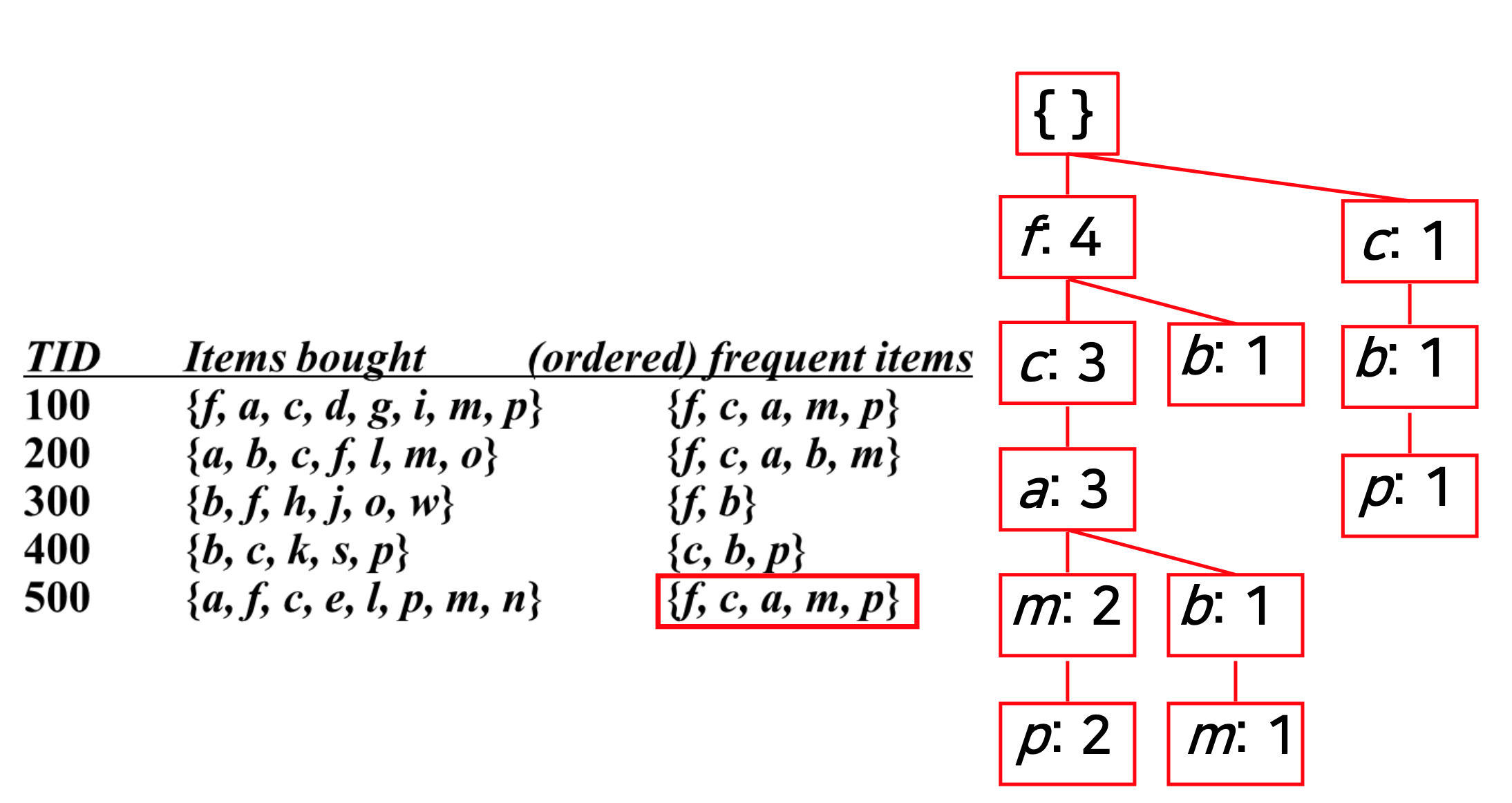
Stage2: FP tree 및 conditional FP tree 채굴
◼ 1단계: FP tree를 conditional FP tree로 나눈다.
◼ 2단계: 각 conditional FP tree를 재귀적으로 마이닝한다.
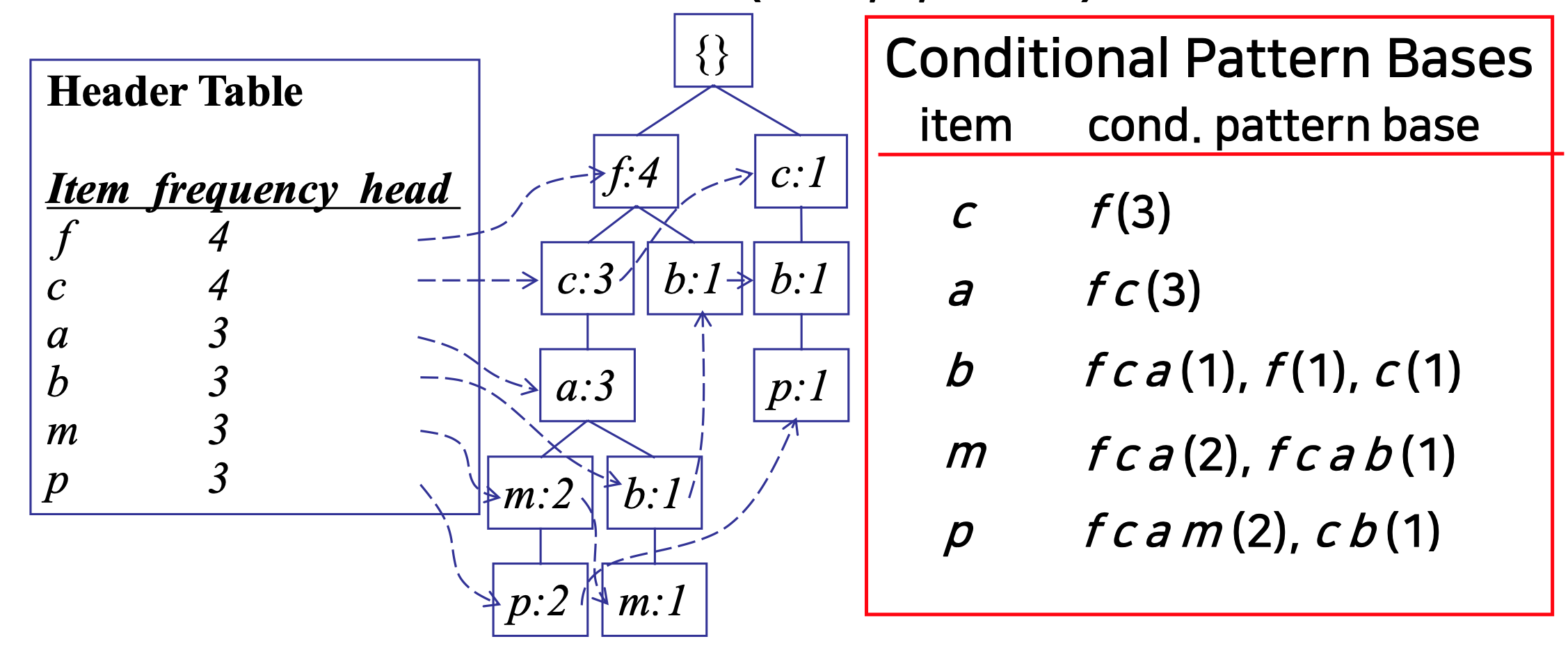


- Advantages of FP-Growth
◼ 분할 및 정복 접근법
◼ 불필요한 후보 생성 및 테스트 회피
◼ 데이터베이스가 FP 트리/조건부 FP 트리로 압축됨
- Apriori vs FP-Growth
Apriori
◼ 후보 품목 세트 생성 및 테스트 필요
◼ support 임계값이 매우 낮은 경우 엄청난 수의 후보 항목 집합을 생성
◼ transaction 데이터베이스를 여러 번 검색
FP
◼ 로컬 자주 사용하는 항목만 사용하여 짧은 패턴에서 긴 패턴을 확장하여 후보 항목 집합의 명시적 생성을 방지
◼ 트랜잭션 데이터베이스를 두 번 검사
FP-Growth의 장점은 minimum support가 낮을때 나타난다.(1.5% 미만)
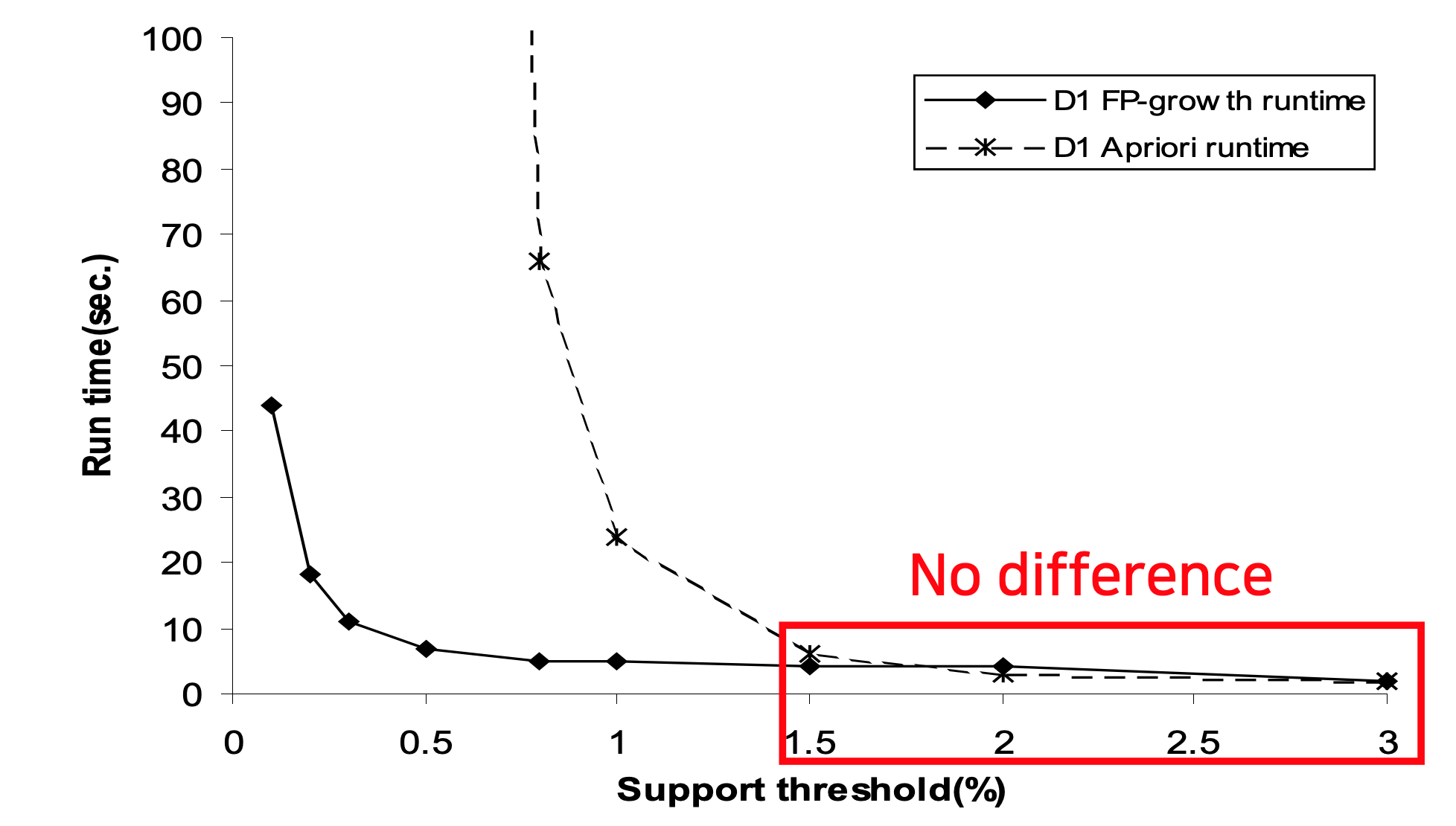
'machine learning' 카테고리의 다른 글
| [ML] Reinforcement Learning (2) | 2022.12.23 |
|---|---|
| [ML] Recommender Systems (0) | 2022.12.21 |
| [ML] Bayesian Classifier and Markov Model (0) | 2022.12.20 |
| [ML] Cost Function Optimization – Gradient Descent (0) | 2022.12.17 |
| [ML] Cost Function Optimization - Regularization (0) | 2022.12.17 |





댓글 영역